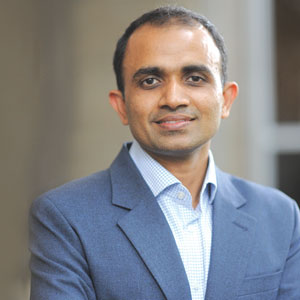THANK YOU FOR SUBSCRIBING

From a Traditional to a Digital Mindset, and the Impact on IT
Hubert Van Dalen, Chief Information Officer, Service Stream


Hubert Van Dalen, Chief Information Officer, Service Stream
When Hubert van Dalen joined Melbourne-headquartered Service Stream Q4 2014, the executive team singled out three key business priorities: revamping workforce management, work order management and project management.
After initially targeting just three business processes Service Stream, a key player in the construction & contracting industry aiming to be Australia’s leading essential network services provider, chose strategically to adopt, not adapt IT solution to avoid customisation, and started the search for a enterprise-wide platform as a broader digital ecosystem, to enhance the quality of service delivery and bring competitive advantage.
However, as much as new Out Of the Box applications were needed to transform business processes, the need for IT agility was not going to come from solutions alone, a mindset change was required. A Digital mindset vs. the old traditional one to accelerate the enterprise into the 21st century.
The benefits of a Digital business transformation are enormous. Financially; a higher Stakeholder value of Business investments, and a portfolio of competitive products & Services. From a customer perspective; an agile response ability to changing business environment, and optimisation of service delivery cost. From an internal perspective; an optimisation of business process functionality, and higher operational and staff productivity. Last but not least from a growth perspective; better skilled and motivated resources. What is the flip side? A massive impact on IT
The IT Impact affects their IT Strategy, Culture, Talent, Technology, IT Philosophy, IT Project management methodology and the IT Business model.
The IT strategy in a traditional model is focused on efficiency, the best Return on Investment and the lowest Total Cost of Ownership.
An IT strategy focused on innovation affects the traditional IT culture. The traditional one is hierarchy based, with juniors and seniors in the ranks and clear accountabilities &responsibilities. The Digital mindset requires a collaboration based culture enabling agility; a high speed for change with standardization in mind. This collaboration culture is harder to achieve in an efficient (read: outsourced) environment, so the Digital transformation asks for small groups in (less) time zones and locations that collaborate well.
The new Digital mindset cultural change asks for different talent too. Were the traditional talent focus was on low cost, often achieved through outsourcing, is the new talent search for high skill, often multi-skilled. Remunerations are no longer based on years of experience, but on the ability to combine all skills quickly. Newer generations have grown up with that speed of information assembly, and can make big steps in reward & recognitions in a short timeframe.
Organisations in a traditional IT setting has legacy Technology, and is struggling to maintain them. The new Digital world is all about Cloud, mobile and apps. The expectations of the users are in line with their personal experiences on devices. These experiences have no concepts of data security, integration, long release/test cycles, it is instant.
As end-users in their personal live do not hear constantly the default “no” answer that they are used to in their corporate live they start to expect a default “yes” answer from their IT department. This different IT Philosophy requires a huge mindset change and a different approach to security, change management, release management, access controls, etc.
"The Digital Mindset Requires a Collaboration Based Culture Enabling Agility; a High Speed for Change with Standardisation in Mind"
Furthermore, the Digital transformation requires a high agility in the way IT manages projects,moving from the traditional waterfall to an iterative method (like agile). A rafter of pre-requisites have to be fulfilled to make that change successful; a) from fixed times (sprint duration), quality, and ideally resources and a variable scope, b) test scripts and test automation for short regression testing cycles, c) the project sponsor ensuring the team has appropriate funding and resources, d) the product owner extremely involved in the project as they are the most demanding role on a scrum team, e) agile development training and experiences for the project staff, and f) focussed teams who are not distracted by incidents or multiple (projects’) development tasks.
Last but not least, the Business Model requires changes, from the traditional Service & Support focus to a Relationship & Partner model.
To complete the Digital mindset transformation these 7 elements: Strategy, Culture, Talent, Technology, IT Philosophy, IT Project management methodology and the IT Business model needs significant attention and its impact on IT might be harder to deal with than the roll out of a large business application.












